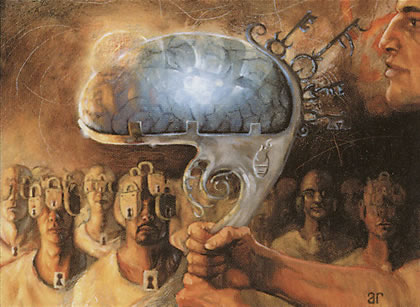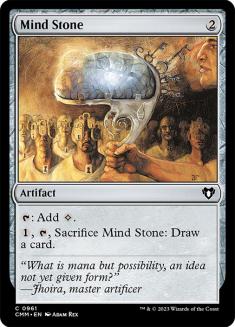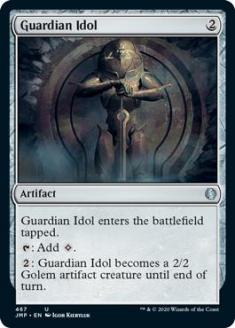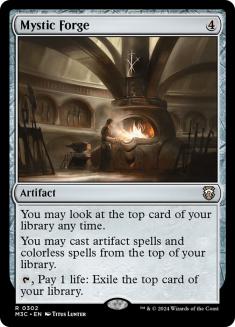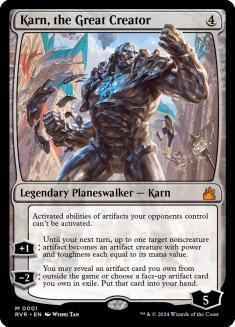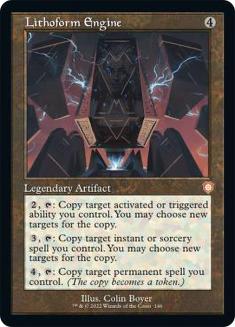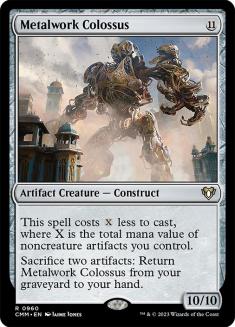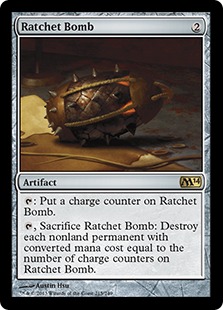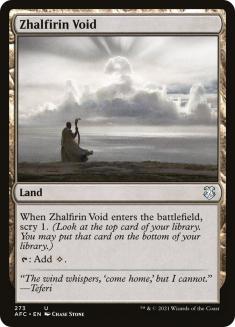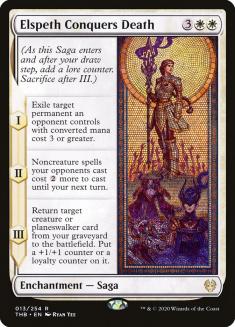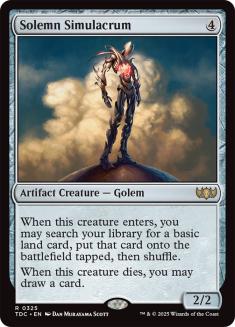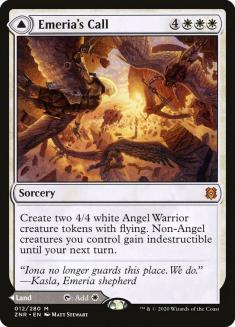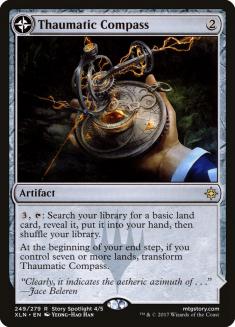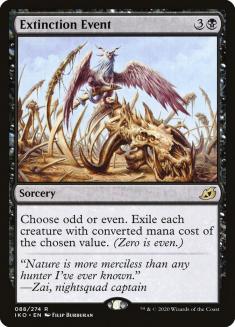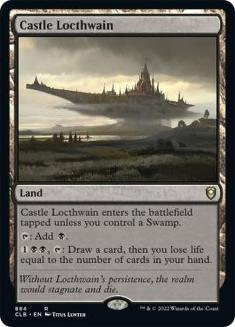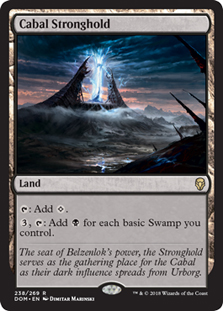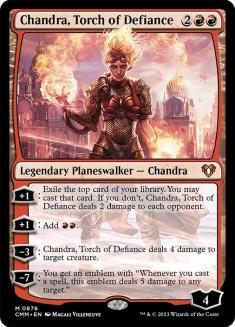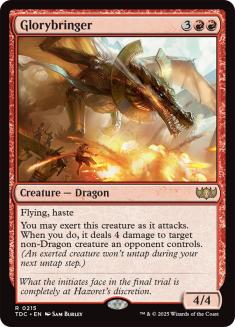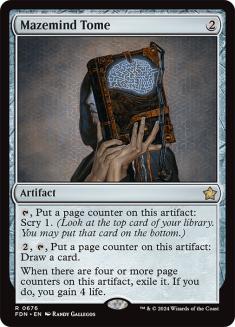Historic has very much grown into its own format with unique dynamics that are unlike Pioneer or Modern, the two formats closest to it. There are a few cards that exist in Historic that aren’t legal in Pioneer that lead to the format having its own metagame, even as more cards from Pioneer make their way into Historic. Two such cards are Mind Stone and Guardian Idol. WotC has been more cautious in recent years with the casting costs of artifacts that tap for mana (mana rocks) than they had been in the past, and it’s been so long since we’ve seen a two-cost mana rock in Standard that there aren’t any in Pioneer, but these cards are legal in Historic.
In the past, green used to be underplayed in Standard, as it failed to find a place, since any color could use artifacts to accelerate, which limited the unique offerings provided by green. But lately, it’s often felt like all but the most aggressive decks have to play green because it’s the only way to keep up with opponents who can ramp to the power midrange cards we’ve seen.
Mind Stone and Guardian Idol allow us to build ramp decks in any color in Historic, which leads to decks that don’t look like anything we’ve seen in any Standard format in the last decade. Let’s start with the most explosive ramp deck, the one that doesn’t play any colors:
Creatures (3)
Planeswalkers (5)
Lands (20)
Spells (32)

This deck uses Powerstone Shard and Sculpting Steel in addition to Guardian Idol and Mind Stone to supplement its ramp package with more artifacts that tap for mana, which is important because all of those are untapped by Paradox Engine whenever you cast a spell.
Mystic Forge allows you to cast every spell in your deck from the top of your library, which means that if you have both of these and enough artifacts to cast any spell in your deck, you can cast every spell in your deck as long as you have a way to navigate through clumps of lands.
Fortunately, Mystic Forge’s ability allows you to essentially scry away a land, and because Paradox Engine untaps it whenever you cast a spell, you’ll be protected from any land that isn’t on top of another land breaking your chain. Mazemind Tome functions the same way, and also untaps whenever you cast a spell, but only four times, and you can also sacrifice Mind Stone to draw through a land if you have to.
With only twenty lands in the deck, it’s unlikely that you’ll encounter a large enough clump to stop you before you accumulate enough artifacts that let you dig through the clump once you start going off.
Eventually, you’ll find Karn, the Great Creator, who can find Aetherflux Reservoir, which you’ll cast in the middle of going off and use to kill your opponent.
Forsaken Monument is kind of like Nissa, Worldwaker in that it’s a five-mana permanent that doubles your mana, which makes it much easier to have enough mana artifacts to go off (any two should often be good enough), and the life you gain will offset the life it costs to use Mystic Forge.
Lithoform Engine may not be worth playing, since it’s largely a win-more card, but when you’re going off, you can copy your Paradox Engine trigger to generate infinite mana, and you can copy all your spells and Karn activations, so it does a lot, but it’s not clear if you ever need any of what it does.
Metalwork Colossus can attack, but honestly, its main purpose in this deck is largely to block, since it’s unlikely to kill your opponent before your combo would, but the free 10/10 certainly adds a lot of power to the deck.
Ratchet Bomb is the primary defensive/interactive card in the deck, which is awkward, because the deck relies on controlling a lot of permanents and Ratchet Bomb is pretty slow. But it’s good against things that cost zero or one and the deck really needs some interactive cards and the options are limited.
The last big strength of the deck is its lands. Because it doesn’t need any colored mana, it gets to play entirely colorless lands with good abilities and there are plenty to choose from. I think you definitely want to prioritize the lands that are passively good — Radiant Fountain and Zhalfirin Void — because they help you without requiring any additional investment.
Most of your lands allow you to spend mana for some kind of effect and those have diminishing returns because there will only be so many times when you want to spend mana to activate a land. For lands with activated abilities, I like to play a diverse mix rather than playing four copies of the best ones so that I’ll have more options in a game.
Without access to colored mana, the sideboard cards you have access to are extremely limited, so rather than trying to build a real sideboard, I’ve prioritized having a lot of options with Karn, and for the most part, I wouldn’t expect to sideboard more than a card or two (and I wouldn’t expect those sideboarded cards to matter very much).
In playing this deck, I found that while it’s explosive, can get some impressive wins, and has decent grinding power, it really struggles with aggressive creature decks (as you may expect). While you might be able to trim some of the expensive cards and maybe play cards with a more immediate impact like more planeswalkers, the options are fundamentally limited enough that I don’t think the aggro matchups are really solvable. This inspired me to branch out and consider other options, to keep some of the power of the artifact ramp cards while gaining access to stronger interaction.
Creatures (9)
Planeswalkers (8)
Lands (20)
Spells (23)

Skyclave Apparition is probably the best white card printed in years and has breathed new life into the color across formats. It’s unique among similar white removal spells not just in that it offers a body that can engage in combat, but also, your opponent never gets their card back. Not surprisingly, it’s the biggest draw to playing white in this deck, as I think it’s generally the biggest draw to playing white in any deck.
In this artifact mirrors, whoever sticks the first Karn, the Great Creator wins, as it turns off the opponent’s cards. Skyclave Apparition is a clean answer to Karn that’s cheap enough to cast without artifact mana and also a great card against aggressive decks.
Wrath of God is everything Ratchet Bomb isn’t but wishes it could be. It’s fast, efficient, and interacts minimally with your own permanents. Wrath of God, especially when you can reliably cast it on Turn 3, can easily turn creature matchups around, so it’s a great card to turn to when the colorless deck struggled with decks like Gruul Aggro.
Elspeth Conquers Death is a nice complement to Skyclave Apparition in that it can answer anything too expensive for Skyclave Apparition, so I like playing them together when I can. It’s been a little more hit or miss in Historic than it is in Standard, so I could see playing fewer, but it’s nice to have a clean answer to opposing Ugins and Ulamogs.
Solemn Simulacrum feels slow and low-impact on Turn 4, but on Turn 3, it feels great, as it can often line up a relevant block while ramping to your big stuff. The colorless deck can’t take advantage of this because it doesn’t use basic lands, but once you’re playing basic lands, Solemn Simulacrum is great in this shell.
This deck doesn’t have any fancy combo finish. It plays more like the Standard Big Red deck Todd wrote about; you just kill their things and ramp to Ugin or Emeria’s Call.
While we have to lose a lot of colorless utility lands to get colored mana, we’re still a one-color deck, so we get to pack a lot of value into our lands. The best land by far is Emeria’s Call. You’ll regularly be able to cast this on Turn 5, when two Angels can take over a battlefield, which means it’s a legitimate top-end card to ramp to that we get to play as a land (which adds a ton of power and consistency to white that other colors can’t quite match even with their DFCs).
On top of that, we still have room for a toolbox of lands for Golos, Tireless Pilgrim that are also nice draws on their own.
In this deck, Karn, the Great Creator isn’t finding a combo piece or serving as a finisher in our combo. It’s just a generic midrange threat and I’ve found myself finding Golos with it most often.
Thaumatic Compass was included in the sideboard as a way to find something generically proactive to do, but I’ve found that I mostly get it when it will immediately transform into Spires of Orazca, which I can use to protect Karn, but I’ve been happy with it in that role as it both protects Karn and helps ramp to bigger threats.
Karn’s static ability is a big draw to using it rather than another planeswalker as your threat because it shuts down opposing Mind Stone decks and also protects you from Aetherworks Marvel, a card that a lot of people are trying to find a way to abuse at the moment.
This deck felt a lot more robust than the colorless version, but I wondered about what other colors had to offer, so I moved on to black.
Creatures (7)
Planeswalkers (9)
Lands (24)
Spells (20)

Thoughtseize is the primary draw to black, which gives you a better game against control decks, since it’s easier to push your important spells through.
Extinction Event replaces Wrath of God, which has its pros and cons. On the one hand, sometimes you won’t be able to answer all of your opponent’s creatures with a single card, but you will always answer better than half of them. In exchange you exile the creatures, which is great against decks like Mono-Black Aggro, and also lets you answer Ulamog, the Ceaseless Hunger or Uro, Titan of Nature’s Wrath.
The texture of the decks is very different because the lands offer unique strengths to each deck. While Emeria’s Call allows the white deck to overload on finishers so that it can always do something powerful when it ramps, the black deck gets Castle Locthwain, which means that sometimes you just dump your hand onto the battlefield and start drawing cards. So you won’t necessarily end games as fast, but you’re better at grinding through interaction.
This means you’re better against control decks, but you also get cheaper removal in your sideboard in form of both Bloodchief’s Thirst and Cry of the Carnarium (or Witch’s Vengeance if your prefer it), which can help a lot against aggro decks.
Golos plays a larger role here but has fewer targets because I’ve chosen to prioritize Cabal Stronghold as an option for Golos, which requires playing a lot of basic Swamps.
I’m not completely sure if I’m using the right mix of planeswalkers. In particular, the third Ugin, the Ineffable may be too many, and Karn, Scion of Urza; Liliana, Death’s Majesty; or Liliana, Dreadhorde General could be better.
The last version I considered was Mono-Red. I didn’t consider green or blue because the artifacts already provide ramp and card draw, and what they’re missing is interaction for cheap permanents, and green and blue don’t offer much there.
Creatures (9)
Planeswalkers (11)
Lands (18)
Spells (22)

While Shatterskull Smashing and Spikefield Hazard offer a nice bit of interaction to this deck, I don’t think red gets as much value out of its lands as white or black.
Red’s strength is spot removal. Chandra, Torch of Defiance largely replaces Solemn Simulacrum, offering a faster ramp spell that doubles as a spot-removal spell, and Glorybringer plays as a kind of more proactive Elspeth Conquers Death with different restrictions about what it can kill.
Bonecrusher Giant, Abrade, and Spikefield Hazard are cheap removal spells that aren’t dead against decks without small creatures. I’m not playing any sweepers main outside of Ugin, not because I have so much more spot removal than the other decks, but because of the absence of other sweepers, I have an additional Ugin compared to the other decks.
In all of these decks, I’ve played four copies each of Mind Stone, Guardian Idol, and Mazemind Tome. I think you want to mulligan most hands that don’t have either a Mind Stone or Guardian Idol with these decks because it’s really important to cast your four-mana spells on Turn 3, so you want to play as many as possible.
Mazemind Tome is just an awesome card that fills a really important role in making sure these ramp decks don’t flood out, and that you have enough cards that you can keep playing lands while interacting to get to the point where you can cast your expensive spells. I think trimming any of these cards in a strategy like this would almost certainly be a mistake.
The core strategy here has felt good and I think all of these monocolored ramp decks are competitive. After playing each of them, I’m really not sure which is best. I like the kind of game the black deck plays, but that might be more of an indictment than anything, as I enjoy working too hard for my wins.

